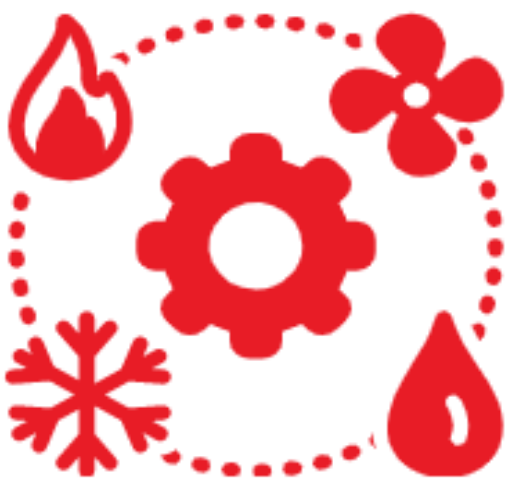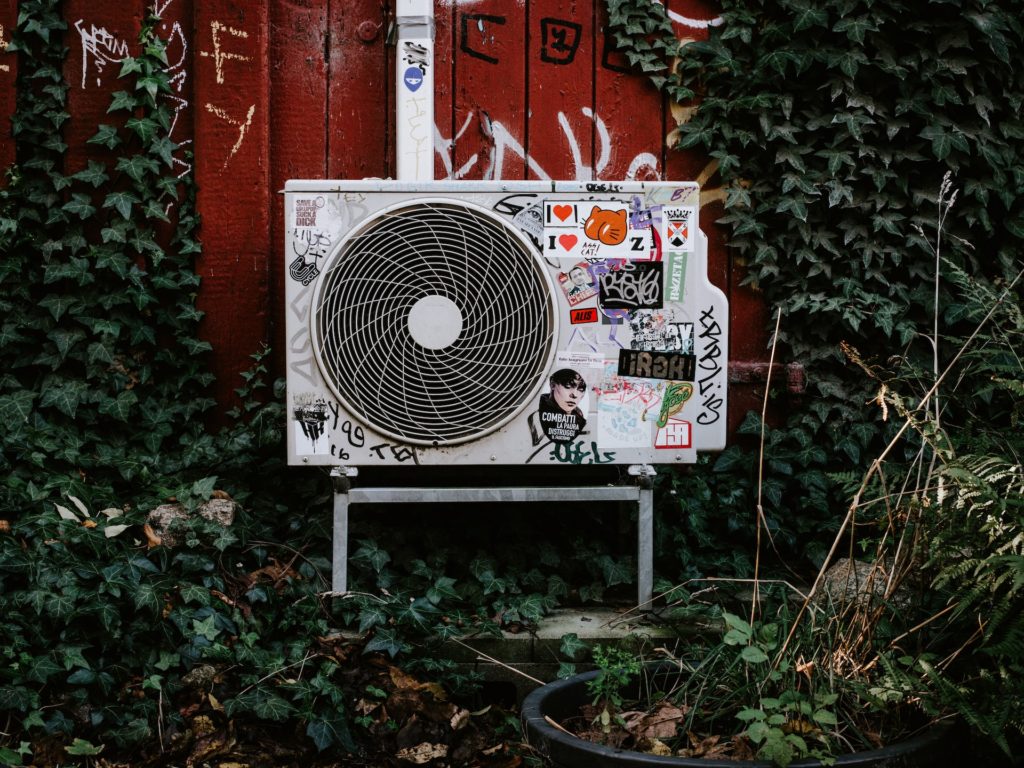SUMMARY
A heat pump is a mechanical system that can provide both cooling and heating within a single entity. It is critical to understand the individual working components of the heat pump before discussing the overall operation. The introduction to the major components of a heat pump system and their respective function is explained here. To summarize the previous article, a heat pump includes an indoor unit, an outdoor unit, and a control system (see figure 1 below). The indoor unit can be further divided into fans, heat exchangers, filters, and a drain system. Similarly, the outdoor unit includes a fan, a heat exchanger, a compressor, and an expansion valve. These are the major components included within the heat pump. This article will introduce additional components required to complete a heat pump cycle and will also discuss more how all these pieces of equipment interact to complete the system.
Figure 2a: Summary of components and their function in a heat pump system
WINTER OPERATION
The first section will discuss the operations for the winter season when hotter air is desired indoors. Once a thermostat is switched on, it sends a signal to the indoor unit. This signal is also passed to the outdoor unit as the indoor unit and outdoor unit are connected by a communication wire. For the heating requirement, the indoor unit (heat exchanger within the indoor unit) will act as a condenser while the outdoor unit will act as an evaporator. The figure below shows the schematic representation (for heating) of all the components within the indoor and outdoor units and how they are involved within the system. The refrigerant intake within the indoor unit is labeled 1 in the figure below. The refrigerant enters the condenser (indoor unit’s heat exchanger) as high-pressure, high-temperature vapor. In the meantime, the fan within the indoor unit extracts the air within the room. The air passes through the filters and comes in contact with the refrigerant within the condenser (Refer to this link to understand more about how the heat exchanger works) where the heat transfer occurs between the refrigerant and the air within the room. The refrigerant releases the heat into the air and leaves the condenser as a high-pressure, low-temperature liquid labeled as area 2 in the image below. The refrigerant leaves the indoor unit and is passed to the outdoor unit at this point.
On the outdoor unit, the refrigerant first passes through the expansion valve. The expansion valve allows for the expansion of refrigerant as a result the refrigerant exiting the expansion valve will be in low pressure, low-temperature liquid state as labeled by area 3 on the image below. The refrigerant then passes through the evaporator (heat exchanger on the outdoor unit). Here, the fan within the outdoor unit draws the atmospheric air into the evaporator where the refrigerant extracts the heat from the air and leaves the heat exchanger as low-pressure, low-temperature gas (Area 4). So, the air leaving the outdoor unit will be cooler after losing heat to the refrigerant. Now, the vapor is passed into a compressor where it is compressed to form a high-pressure, high-temperature vapor.
Figure 2b: Schematic Heat Pump Cycle for Heating
The refrigerant will move into the indoor unit again and repeat the whole process. In this way, the indoor unit supplies required hot air during the winter conditions. When the temperature of the thermostat is increased, the temperature and pressure of the refrigerant coming out of the compressor will also be increased along with the fan’s speed within the indoor and outdoor units.
SUMMER OPERATION
Now for the cooling conditions the indoor unit (heat exchanger within the indoor unit) will act as an evaporator while the outdoor unit will act as a condenser. The figure below shows the schematic representation (for cooling) of all the components within the indoor and outdoor units and how they are involved within the system. The refrigerant intake within the indoor unit is labeled 1 in the figure below. The refrigerant enters the evaporator as a low-pressure, low-temperature liquid. Here, the fan within the indoor unit draws the air within the room into the evaporator where the refrigerant extracts the heat from the air and leaves the heat exchanger as low-pressure, low-temperature gas (Area 2). Since the air rejects heat from the refrigerant, desired cooler air is supplied to the room by the indoor unit. Here, refrigerant leaves the indoor unit and is passed to the outdoor unit.
Figure 2c: Schematic Heat Pump Cycle for Cooling
In the outdoor unit, the low temperature, a low-pressure vapor is first passed into a compressor where it is compressed to form a high-pressure, high-temperature vapor (Area 3). Now, the refrigerant enters the condenser where the fan within the outdoor unit extracts the air from the atmosphere. The air comes in contact with the refrigerant within the condenser where the heat transfer occurs between the refrigerant and the air within the room. The refrigerant releases the heat into the air and leaves the condenser as a high-pressure, low-temperature liquid labeled as area 4 in the image below. Finally, the refrigerant passes into an expansion valve where it expands as a low-pressure, low-temperature liquid which is the intake condition at the indoor unit (Area 1).
In this way, the refrigerant process repeats, and the indoor unit supplies required cool air during the summer conditions. The process and cycle for heating and cooling are exactly similar, the only difference is that the indoor units act as an evaporator during summer and as a condenser during winter. How does this occur? The answer is a reversing valve.
The reversing valve changes the process by moving the refrigerant in the opposite way. The reversing valve is also called a four-way valve as it includes 4-lines connecting to it. The compressor discharge is located at the top along with connections to the indoor coil, outdoor coil, and compressor suction at the bottom. The reversing valve is connected to a solenoid valve which in turn is connected with a control system that dictates the flow of the refrigerant. The flow for both cooling and heating conditions with a reversing valve is shown in the images below.
Figure 2d: Heating Schematic for Heat Pump Cycle with Reversing Valve


Thanks for your blog, nice to read. Do not stop.